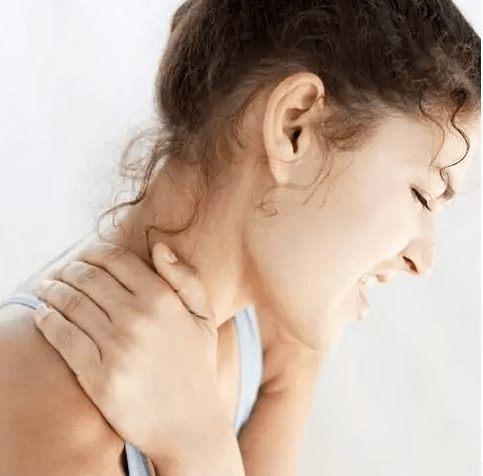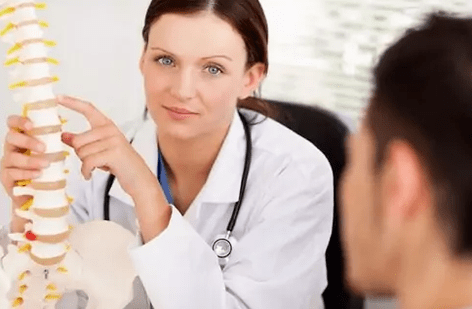Another serious disease of our time is osteochondrosis.Its first signs may appear in his youth when he suddenly sat on a computer or a notebook for a long time, suddenly, at first, he begins only discomfort, and then pain in the seventh cervical spine.Soon the pain happens that it is difficult to turn your head or "tears" from the pillow.A few days later, the exacerbation usually goes through and then the attack may last for several months, maybe years.However, don't give me!The first attack is a serious warning that the mechanism of devastating dystrophic changes in your body has already been launched.To understand this, figure out what osteochondrosis is and why you should start treatment with the first symptoms.

What is osteochondrosis?
Osteochondrosis is a complicated dystrophic changes in the spine in which such stages can be distinguished:
- Dystrophic changes of the intervertebral discs cartilage tissue, causing movements to limit and cause discomfort (stage I)
- Drink deformity and gradual decrease in intervertebral distance (Stage II).
- Intervertebral hernia (stage III) formation
- Spikes (osteophytes) formation and osification of ligaments that make movement very difficult and painful (Stage IV)
The hernia formed is a difficult process that will be dedicated to all sections.However, you should now know that such a serious illness occurs if osteochondrosis is not treated on time.So, so you have an idea of what a hernia is, I'll tell you in two words.To do this, you will have to turn to anatomy again and remember the spine and spinal disc.
Distribution of spinal disc causes weakening of its fibrous rim and the movement of the main shock of the disc (the nucleus), which results in Bulgarian (protrusion), or so -called."Pre -hungry" emerged.Then, under the influence of load, sooner or later there is a breakdown of the ring and the output of the nucleus outside the disc - the hernia is directly formed, causing severe pain when the radical nerve is damaged.
In order to identify osteochondrosis, especially at an early stage, when the curve does not provide obvious external signs, it also determines its orientation and quality, it is necessary to make magnetic -resonance imaging.This diagnostic method does not harm human health, unlike x -ray, it also allows you to accurately determine the angle of deviation.Based on the X -ray and MRI images, the specialist builds the right treatment plan for the patient, which is, of course, strengthening the muscle corset.
When choosing a clinic, including the MRI examination, it is first necessary to study the power of the equipment used and the qualification of clinic staff.
Types of spinal osteochondrosis
Osteochondrosis can be of several types:
- The cervical cervix is the most common of both young and the elderly
- Chest - relatively rare
- Waist - develops after 40 years
- Sacral - usually switch from waist
- Common - affects several departments or even the whole spine
In the same sequence, spontaneous development of this disease is often found: starting from the upper cervix of the cervix and ends with sacral and cockpea.
But it happens that the type of osteochondrosis is associated with human activity.Thus, cervical cervix is usually common to students, designers, and all other representatives of the "brain" professions, in which the neck is in a constant tense condition for a long time.Physical labor staff, young people with athletes-dejettoids may have waist osteochondrosis, taxi drivers, shoe manufacturers and other representatives of "sitting" with specialties-with a lumbar plus!Osteochondrosis is also often observed in the vet, which stands almost all day long, as these are the sacraments that hold our body in an upright position, and the whole load comes to stand on it or walks
Causes of the appearance and development of osteochondrosis
However, osteochondrosis is not just a seductive lifestyle disease, inadequate posture or weight gain.There are many more factors and reasons for the origin of this disease.I emphasize only the chief:
- Incorrect meal in insufficient amount of protein and increased sugar and fats
- Broke the metabolism and hormonal imbalance
- Infectious diseases
- Hypothermia
- High weight and obesity
- Spinal injuries
- Degeneration of the bone of age
- Hereditary diseases
- Sharp
The main symptoms of osteochondrosis
Cervical osteochondrosis:
- Pain in the neck and back (can give the shoulder edge, sternum and by hand)
- Dizziness, especially when changing position
- Bumps in the neck, facial, tongue, submarine areas
Chest osteochondrosis:
- Chest pain that may be activated during inhalation and movement
- The sensation of chest bumps
Waist:
- Pain in the lower back (may be acute or acute) that gives the legs while the leg pain in the legs can move around the entire length of the limb
- Feet (disruption or even loss of sensitivity)

Pain for osteochondrosis is a specific neurological.So, headache, dizziness, bumps or feet in the legs are a tendency for direct manifestations of diseases of the head or legs, although these can be symptoms of osteochondrosis of the spine.Therefore, if you notice something concerned about your well -being, coincide with the signs listed, make sure you visit a neuropathologist.The doctor who has examined the suspicion of this disease will inevitably determine the X -Ray examination.
Basic methods of treatment for osteochondrosis
The most effective removal of spinal pain:
- Therapeutic gymnastics (exercises for spinal pain)
- MLS Laser (after the 2nd session, the pain passes)
- Hivamat (a unique procedure that relieves pain immediately, but we have to be just like 2-3 times).
The very elimination of the causes of the progression of osteochondrosis is a major method of treatment and prevention.
Prevention and uncontrolled treatment
This is the first one:
- Active (mobile) lifestyle and sport
- Normal meals with a protein diet with the exception of fats and sugars
- Medical Physical Education (Exercise Therapy) with individually selected exercises for each type of osteochondrosis
- Physiotherapy (magnetotate therapy, ultrasound treatment, electrophoresis, laser therapy)
- Massage, manual and reflexology
However, such a conservative method of treatment is suitable for prevention, to prevent the progression of osteochondrosis, not in the active period of the disease.But how to treat this disease if it is launched, its manifestations are obvious and people have an exacerbation stage, namely: exactly: exactly:
- Pain and elevated temperature
- Limited, with great difficulty, movements
In this case, exercise therapy and physiotherapy are strongly contraindicated and are used exclusively drug methods.
Methods of medication
First, you need to stop the pain and relieve the inflammatory process in the nervous spine, which is irritable.For this they will be appointed:
- Non -anti -anti -anti -anti -anti -anti -anti -remedies;Corticosteroids, Glucocorticoids IDR.(They are prescribed in the case
- Novocaine blockade (with severe pain)
- Preparation for removing muscle spasms;
- Painkillers, gels and creams;
The second stage of treatment includes:
- Use of vasodilators: Osteochondrosis is always a narrowing of blood vessels and oxygen starvation of the brain (hence headache and dizziness)
- When appointing nervous system funds: Patients with these diseases are always alarming and unlikely, in most cases they are very scared of the first attacks of the disease.
- Treatment of concomitant events - it may be hypertension and disruption of heart activity
- Treatment should be prescribed as a neuropathologist, in the form of drops, injections and tablets
Do not try to treat the disease itself!
At the end of the acute period and normalize the wells, return to non -prophylactic methods of preventive treatment: exercise therapy, massage and physiotherapy in the absence of contraindications to them.
Health for you!


























